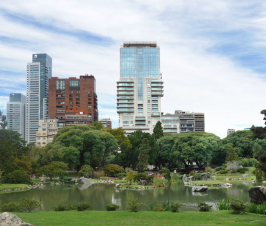“It is a scientific fact,” he wrote, “that the occasional contemplation of natural scenes of an impressive character … is favorable to the health and vigor of men and especially to the health and vigor of their intellect.”– Landscape architect Frederick Law Olmsted
While it may not be an absolutely established fact for much of the scientific community, research is profoundly in support of natural scenes, nature submersion, and even living closer to nature as having positive effects on health. One year ago, National Geographic Magazine reminded us of why the the intimate connection we have with the natural world is so important, and why we wanted to spend more time outside last year – and this coming year(1).
There is a clear association between many of the health problems we see in our modern world which are directly or indirectly associated with too much time spent indoors – obesity, depression, anxiety, and pervasive nearsightedness(1). This has spawned a renewed interest in researching how the natural world affects human physiology, especially the brain. The research, as one would expect, is incredibly favorable to people getting more time outdoors.
A 2015 study from Toronto of 31,000 residents, actually showed that living on blocks with more trees showed a boost in heart and metabolic health equivalent to what would be expected from a $20,000 increase in income(2).
Many studies have now shown that when hospital patients can see trees and grass from their windows they recover faster, children perform better in school, and there is less community violence. Even pictures of natural settings can help calm people down and relieve stress – as well as create a mindset of empathy and altruism(3). Studies have confirmed that natural scenes, and being in nature decreases pulse rate, as well as cortisol levels and increases positive feelings(4).
Given that only about 10 percent of American teens spend time outside, prescribing a 40-50 minute walk 3 days a week could be a viable treatment plan for many people suffering from stress and anxiety or even mild depressive symptoms.
- Williams, Florence.This is Your Brain on Nature. National Geographic Magazine, Dec 2015.
- Omid Kardan, et al.Neighborhood greenspace and health in a large urban center. Scientific Reports 5, Article number: 11610 (2015)
- Gwang-Won Kim, MS, et al.Functional Neuroanatomy Associated with Natural and Urban Scenic Views in the Human Brain: 3.0T Functional MR Imaging.Korean J Radiol. 2010 Sep-Oct; 11(5): 507–513.
- Song C, et al.Physiological Effects of Nature Therapy: A Review of the Research in Japan.Int J Environ Res Public Health. 2016 Aug 3;13(8). pii: E781. doi: 10.3390/ijerph13080781.
 Node Smith, associate editor for NDNR, is a fifth year naturopathic medical student at NUNM, where he has been instrumental in maintaining a firm connection to the philosophy and heritage of naturopathic medicine amongst the next generation of docs. He helped found the first multi-generational experiential retreat, which brings elders, alumni, and students together for a weekend campout where naturopathic medicine and medical philosophy are experienced in nature. Three years ago he helped found the non-profit, Association for Naturopathic ReVitalization (ANR), for which he serves as the board chairman. ANR has a mission to inspire health practitioners to embody the naturopathic principles through experiential education. Node also has a firm belief that the next era of naturopathic medicine will see a resurgence of in-patient facilities which use fasting, earthing, hydrotherapy and homeopathy to bring people back from chronic diseases of modern living; he is involved in numerous conversations and projects to bring about this vision.
Node Smith, associate editor for NDNR, is a fifth year naturopathic medical student at NUNM, where he has been instrumental in maintaining a firm connection to the philosophy and heritage of naturopathic medicine amongst the next generation of docs. He helped found the first multi-generational experiential retreat, which brings elders, alumni, and students together for a weekend campout where naturopathic medicine and medical philosophy are experienced in nature. Three years ago he helped found the non-profit, Association for Naturopathic ReVitalization (ANR), for which he serves as the board chairman. ANR has a mission to inspire health practitioners to embody the naturopathic principles through experiential education. Node also has a firm belief that the next era of naturopathic medicine will see a resurgence of in-patient facilities which use fasting, earthing, hydrotherapy and homeopathy to bring people back from chronic diseases of modern living; he is involved in numerous conversations and projects to bring about this vision.

















